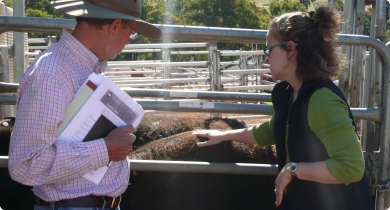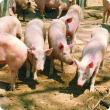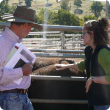Genetics & selection
Genetic improvement is a major factor contributing to the profitability of production systems for livestock and poultry. Breeding and selection have resulted in significant economic gains in beef, lamb, wool, milk, pork, egg and chicken production.
The Department of Primary Industries and Regional Development hosts the Genetic Resource flock funded by Meat and Livestock Australia and the breech strike and worm resistant Rylington Merino flocks funded by Australian Wool Innovation Ltd. These flocks make use of measurement, modern statistical methods and DNA technologies to estimate breeding values for traits such as disease resistance, meat quality and reproduction that otherwise are difficult and expensive to measure. Outputs are used by sheep breeders through nationally recognised programs such as Lambplan and Merinoselect, to genetically improve meat and wool production from robust, easy care sheep.
The department also advises the local beef and dairy industries on genetic improvement programs in co-operation with Beefplan and Dairy Australia. Genetic improvement in the poultry and pig industries are mainly carried out by the private industry with input from research groups nationally and internationally.
Filter by search
Filter by topic
- (-) Remove Livestock species filter Livestock species
- Sheep (8) Apply Sheep filter
- Management & reproduction (3) Apply Management & reproduction filter
- Beef cattle (3) Apply Beef cattle filter
- Pigs (2) Apply Pigs filter
- Meat quality (1) Apply Meat quality filter
- Livestock research & development (1) Apply Livestock research & development filter
- Livestock parasites (1) Apply Livestock parasites filter
- Feeding & nutrition (1) Apply Feeding & nutrition filter




